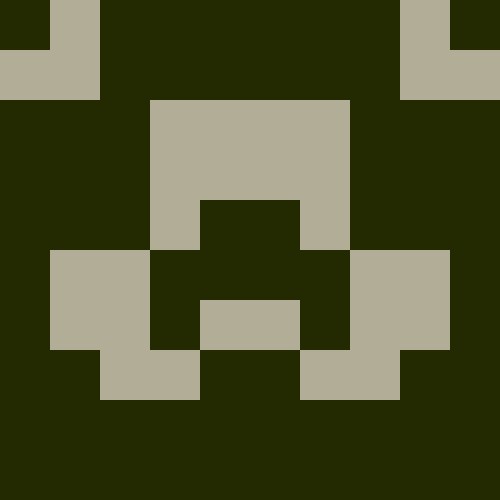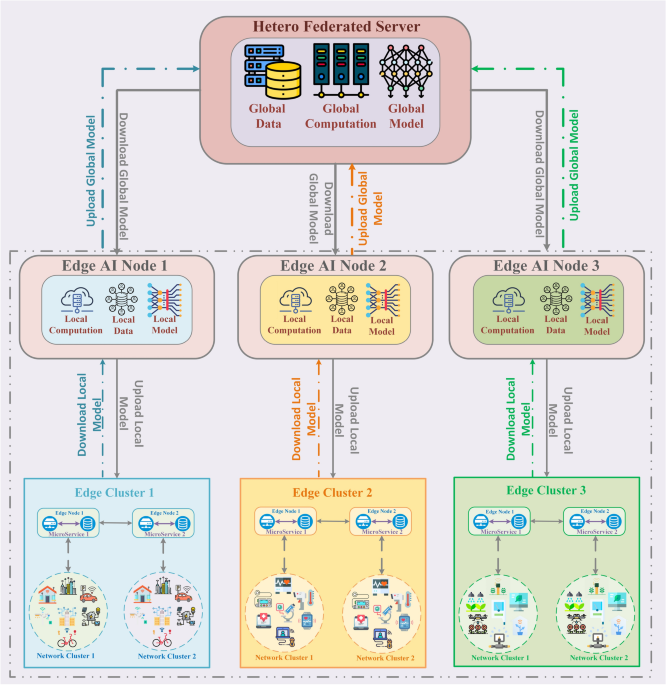Introduction The rapid increase of Internet of Things (IoT) devices and transportable technology in recent years has led to an exponential increase in application data generation1. According to a Cisco report2, around 2.32 zeta bytes of data are produced daily at the network edge of 2023. This enormous volume of edge data has driven the

Top 9 AI Tools Transforming IoT Applications
The Internet of Things (IoT) has become a cornerstone of modern technology, connecting devices, people, and systems in ways we never imagined. Yet, the vast amount of data generated by IoT devices demands sophisticated tools to process, analyze, and act on this information.
In this article, we delve into nine groundbreaking AI tools that are redefining the IoT landscape. Each tool offers unique features and capabilities, equipping developers and organizations to harness the true potential of IoT.
Whether you’re an industry professional or simply curious about the synergy between AI and IoT, these tools exemplify how cutting-edge technology is shaping a smarter, interconnected future.
1. TensorFlow for IoT Model Development
Harnessing the prowess of this open-source library, TensorFlow empowers IoT developers. It enables them to craft and deploy intricate machine learning models indispensable for analyzing IoT data. Notably, TensorFlow’s versatility is key to enhancing decision-making by transforming raw data into actionable insights seamlessly.
The tool’s capabilities extend beyond conventional applications—by providing robust scalability tailored to vast IoT environments—it facilitates the seamless integration of AI with IoT architectures.
In 2024, TensorFlow continues to revolutionize how industries utilize AI-driven IoT systems, establishing itself as an invaluable asset. Its cutting-edge advancements elevate predictive analytics, optimize sensor networks, and address complex industrial challenges across the globe.
2. Azure IoT Central with AI Capabilities
Launched in 2016, Azure IoT Central, a paradigm-shifting managed platform, empowers organizations with comprehensive solutions for managing connected devices and data, supporting the entire ecosystem. Today, it’s an ideal choice for those seeking to harness AI’s potential to create a revolution in IoT applications.
Azure IoT Central’s prowess lies in its ability to transform an organization’s journey into IoT through its blend of AI and cloud innovation. It enhances data-driven decisions, enabling organizations to anticipate challenges and drive substantial efficiencies within their operations seamlessly.
Through the power of cloud tech, it democratizes machine learning, making it accessible even to those not fluent in the 3, Python, and R programming languages, and offers unparalleled scalability for fast-growing IoT ecosystems.
3. ChatGPT for IoT User Interaction
ChatGPT emerges as a powerful beacon, facilitating seamless interactions between users and IoT systems in intuitive ways. With unparalleled linguistic capabilities, it serves as a conversational bridge, allowing users to interact more naturally with complex IoT ecosystems.
Meticulously designed, ChatGPT taps into a universal language framework that captures nuanced user inputs. This allows IoT devices to become more responsive, understanding context and making decisions that are increasingly aligned with user expectations and needs.
By infusing conversational AI with IoT, ChatGPT is spearheading a revolution where interaction is not only seamless but also highly personalized. This integration is reshaping the IoT landscape, where user-centric experiences leverage AI’s prowess to inspire innovation, driving IoT forward in ways previously unimaginable.
For more insights into its capabilities and applications, exploring a detailed ChatGPT Review can provide a deeper understanding of how it transforms IoT experiences.
4. IBM Watson IoT Platform
Established in 2015, Watson IoT swiftly emerged as a powerhouse that effectively processes massive IoT data streams with precision and speed. This platform leverages AI to uncover actionable insights from complex datasets, optimizing operations and elevating efficiency.
Businesses can now transform their IoT ecosystems with Watson’s cognitive capabilities, which facilitate seamless integration of AI functionalities. Its robust analytical tools enable predictive maintenance, fault detection, and proactive resource management.
Through the power of the cloud, Watson IoT offers scalability and flexibility, allowing organizations to grow their IoT initiatives. It is the ultimate solution for those seeking to harness AI for strategic innovation and sustainable growth across various applications.
5. Google Cloud IoT AI Solutions
Google Cloud IoT AI Solutions merges the brilliance of AI with the transformative capabilities of IoT. Infused with machine learning, these solutions enable organizations to extract profound insights from their IoT data seamlessly.
These advanced AI frameworks render Google’s offering not only robust but exceptionally agile, empowering enterprises to optimize their IoT frameworks with precision and purpose. By integrating expansive cloud capabilities, businesses can tailor bespoke AI-driven applications.
By 2024, organizations leveraging Google Cloud IoT AI Solutions have witnessed profound transformations, optimizing operations and unlocking unprecedented efficiencies through intelligent analytics.
6. NVIDIA Jetson for Edge AI
The Jetson lineup, a robust computational suite of small, powerful computers, enables the execution of AI-driven tasks directly at the edge, minimizing latency and enhancing response time. This suite brings the prowess of deep learning models to scenarios where real-time processing is critical, transforming IoT architectures into agile and dynamic systems.
Impressively, Jetson today stands as a cornerstone for building scalable intelligent environments. It dramatically shifts the paradigm, allowing developers to deploy sophisticated neural networks that enable edge devices to perform tasks previously confined to the cloud.
In practice, the Jetson platform empowers innovators to create groundbreaking applications across industries, from autonomous machines to AI-powered surveillance solutions.
7. Amazon SageMaker for IoT Analytics
Engineered with precision, SageMaker brings forward machine learning functions tailored to unleash innovation. With its integration capabilities, this solution enables IoT systems to process extensive datasets gathered from connected devices, delivering a fusion of robust modeling, training, and deployment in real-time scenarios, empowering strategic decision-making.
This platform allows developers to automate the optimization process of their IoT models with a spectrum of powerful AI tools, from data labeling to complex algorithm training, enhancing the capacity for predictive analytics and real-time operational intelligence.
In this dynamic era, capitalizing on SageMaker’s “AutoML” feature empowers users to explore new horizons and revolutionize IoT ecosystems.
8. Salesforce Einstein for IoT-Driven Insights
This transformative AI tool acts as the brain behind data-driven foresight. With its ability to seamlessly integrate vast streams of data from myriad connected devices, Salesforce Einstein empowers organizations to turn abstract insights into tangible outcomes.
Predictive analytics shape the future as this AI marvel navigates the evolving landscape of IoT data with unparalleled precision.
By unlocking the potential of real-time decision-making, Salesforce Einstein orchestrates a symphony of efficiency across industries – from boosting customer engagement with personalized experiences to optimizing supply chain logistics at the speed of innovation – enabling stakeholders to envisage and achieve their most ambitious goals.
In a world brimming with data, Salesforce Einstein emboldens enterprises to harness the immense opportunities of IoT-driven insights, catapulting them to the forefront of transformative change.
9. Edge Impulse for TinyML in IoT Devices
Edge Impulse stands as a transformative pioneer in enabling TinyML applications on IoT devices. Embracing the power of machine learning at the edge, these devices can execute complex analytics right where data is generated, thus vastly improving efficiency and response times.
This innovation is essential for applications where latency and bandwidth are critical concerns. Furthermore, these models have been optimized to run with minimal computational resources, making them ideal for battery-powered IoT devices.
Edge Impulse empowers developers to seamlessly create, test, and deploy machine-learning models tailored to specific IoT applications. With its accessible and intuitive platform, engineers can harness the full potential of edge computing and unlock new IoT capabilities that were previously unimaginable.
By fostering a collaborative ecosystem, Edge Impulse encourages a shift from the traditional cloud-centric approach to a more distributed, localized processing paradigm.
Concluding Thoughts
The transformative wave of IoT AI tools is not just a fleeting trend but a monumental shift.
These tools are paving pathways for both industries and individuals, fostering a future ripe with possibilities. They are reconfiguring the landscape, where interconnected devices intelligently interpret data.
The journey of integrating AI with IoT heralds a new epoch of technological advancement, promoting efficiency and innovation. As these tools evolve, they promise revolutionary breakthroughs across various domains.
The continual enhancement of IoT AI tools presents unparalleled opportunities for innovation, driving industries forward. The future will likely see smart integration as the norm, enabling new solutions.
Embrace this dynamic evolution, as the synergies between IoT and AI keep reshaping our connected world.



